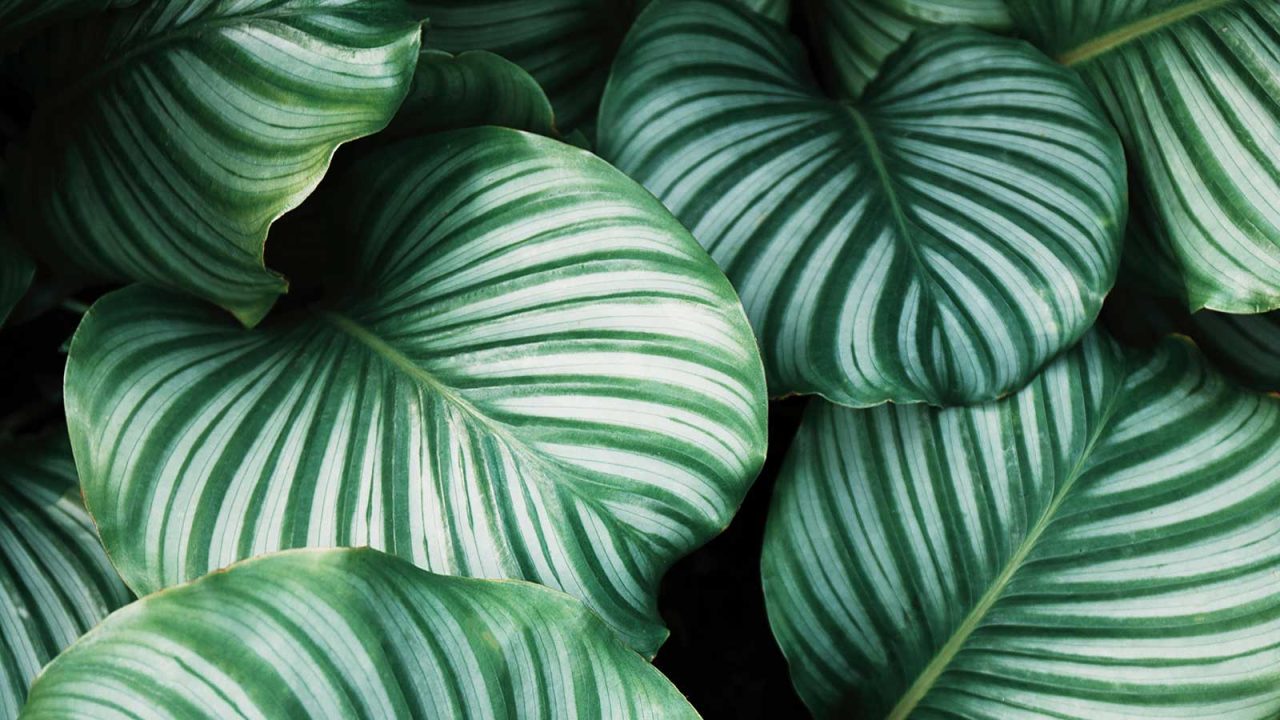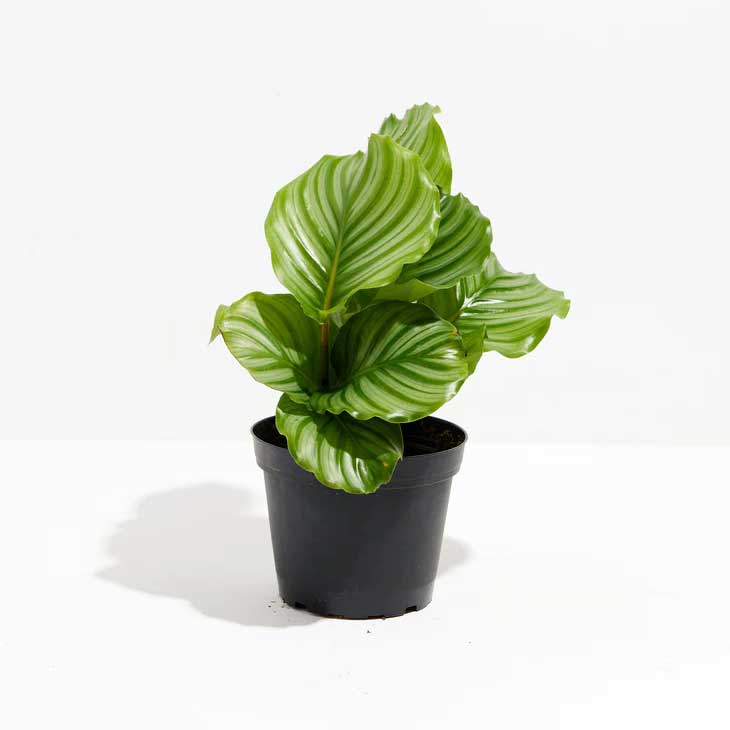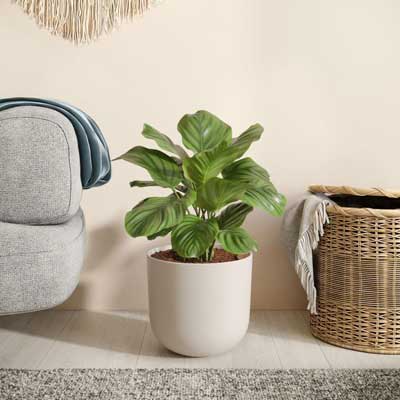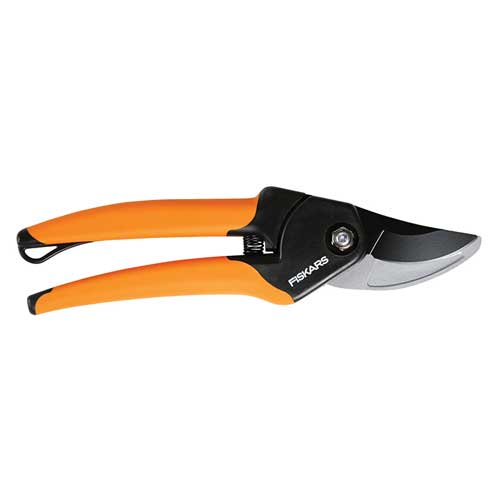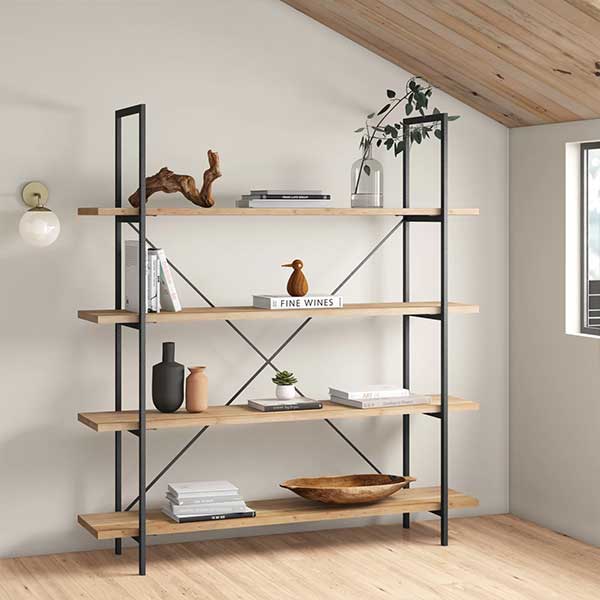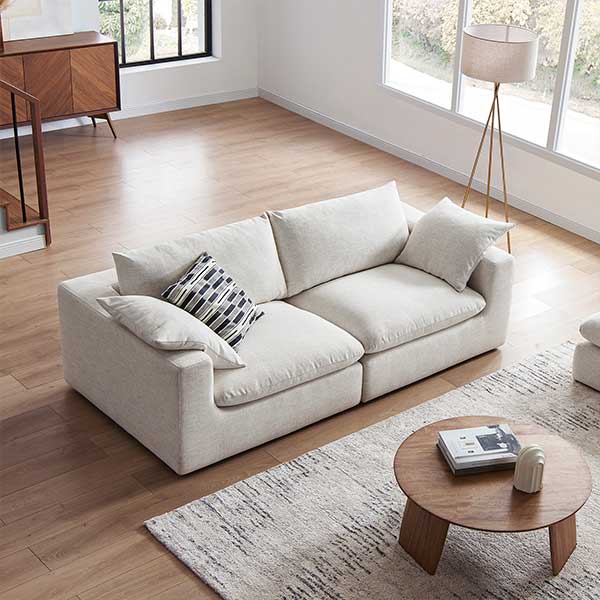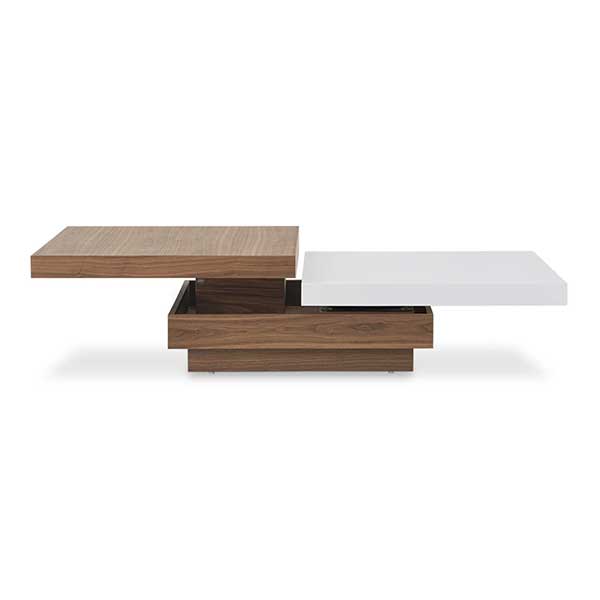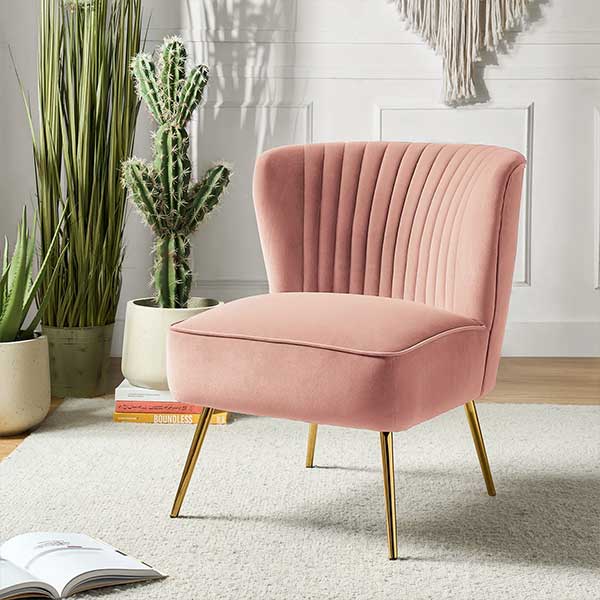Calathea Orbifolia Overview
Calathea Orbifolia, also known as Goeppertia Orbifolia, is a stunning tropical plant that has become a popular choice for indoor plant enthusiasts. Its large, round leaves with silver-green hues and dark green stripes make it a show-stopping addition to any space.
Native to Bolivia, Calathea Orbifolia is a member of the Marantaceae family, which is known for its beautiful foliage and unique ability to move its leaves in response to changes in light and temperature. Calathea Orbifolia "closes up" its leaves at night and "opens up" during the day. This phenomenon is known as nyctinasty.
As a houseplant, Calathea Orbifolia is highly valued for its beauty. It prefers bright, indirect light and moist soil. With proper care, this plant can thrive indoors and provide a stunning addition to any home or office space.
Where to Buy Calathea Orbifolia
If you're looking to add one to your indoor plant collection, here are some of the best places to buy a Calathea Orbifolia:
Lively Root offers a variety of indoor and outdoor plants, including Calathea Orbifolia.
Walmart and Home Depot are good choices, as they offer a wide selection of plants at affordable prices.
Bloomscape, The Sill, Garden Goods Direct, Horti, and Terrain are also great options for buying Calatheas online, as they all have a wide range of healthy, well-cared-for plants to choose from.
Easyplant sells Calatheas and other indoor plants in self-watering pots.
Calathea Orbifolia Care Tips
Caring for Calathea Orbifolia can be a bit challenging, but it is certainly worth the effort. By following these care tips, you can help your Calathea Orbifolia thrive and enjoy its stunning foliage for years to come.
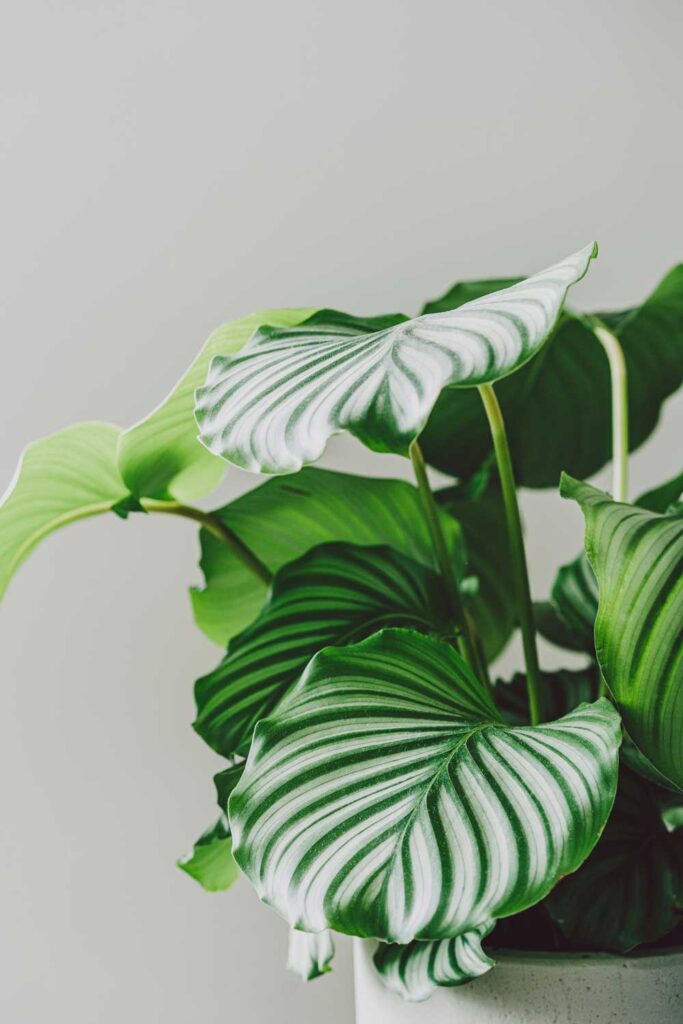
Light Requirements
Calathea Orbifolia prefers bright, indirect light. Direct sunlight may cause the leaves to scorch or fade.
To provide the perfect lighting conditions for your Calathea Orbifolia, place it near a window with filtered light or use a sheer curtain to diffuse the light and protect the plant from direct sun exposure. This will allow the plant to receive the right amount of light without risking any damage to the leaves. Additionally, rotating the plant periodically can help ensure that all sides of the plant receive adequate light.
During the winter months when natural light is limited, it may be necessary to supplement the plant's lighting with artificial sources, such as fluorescent lights or LED grow lights, to keep it healthy and thriving. These lights can mimic the natural spectrum of light that plants need to grow and thrive, making them an excellent option for homes with limited natural light. When using artificial light sources, it is essential to position them close enough to the plant to provide adequate light without causing any heat damage.
Water Requirements
Calathea Orbifolia requires consistent moisture to thrive, making it essential to water the plant regularly. However, it is crucial to avoid overwatering, which can lead to root rot. Water the plant when the top inch of soil feels dry to the touch, using room-temperature water. To ensure your plant receives the right amount of water, use a well-draining potting mix, and choose a pot with drainage holes to prevent waterlogged roots.
Calathea Orbifolia is sensitive to the chemicals present in tap water. To avoid leaf browning, use filtered, distilled, or rainwater for watering. These types of water are free from the chemicals present in tap water and can help keep your plant healthy and vibrant.
Calathea Orbifolia's watering requirements may vary depending on the season and environment. During the summer months when temperatures are higher, the plant may require more frequent watering to maintain adequate moisture levels. In contrast, during the winter months when temperatures are cooler, the plant may require less frequent watering to prevent overwatering.
For those who are unsure about the right time to water their Calathea, a moisture meter can serve as a helpful tool in determining the appropriate timing. By using a moisture meter, you can easily determine when it's time to water your plant and avoid over or under-watering.
There are many different types of moisture meters available, including digital and analog options. Some moisture meters may also include additional features, such as a pH meter or light meter, which can be useful for monitoring other aspects of your plant's environment.
To use a moisture meter with your Calathea Orbifolia, start by inserting the probe into the soil. Make sure to push the probe down to a depth of at least 2-3 inches (5-8 cm) to get an accurate reading. Then, read the moisture level on the meter. If the reading is low, it's time to water your plant. If the reading is high, it's best to wait a few days before watering.
In addition to using a moisture meter or checking the soil manually, there are other signs that can indicate when your Calathea Orbifolia needs water. For example, the leaves may start to droop or curl, or the plant may become lighter in weight. However, it's important to avoid waiting until these signs are present before watering, as the plant may already be stressed or damaged.
Temperature Requirements
This plant thrives in temperatures between 65°F and 75°F (18°C to 24°C). Keep it away from drafts, air conditioning vents, or heating sources to avoid temperature fluctuations. Sudden changes in temperature may stress the plant, leading to leaf curling, brown edges, or even leaf drop.
If you're unsure about the temperature in your space, use a digital thermometer to monitor the area where you've placed your Calathea Orbifolia. This will allow you to ensure that the temperature remains within the ideal range for the plant's growth and development. Additionally, if the temperature in your space falls below the ideal range, you can supplement it with a space heater or move the plant to a warmer location.
Humidity Requirements
This tropical plant loves high humidity levels of around 60-70%. To maintain adequate humidity levels for your Calathea Orbifolia, there are several options you can try.
One option is to place the plant on a tray with moist pebbles. Start by selecting a tray that is slightly larger than the pot of your Calathea Orbifolia. Fill the tray with a layer of small pebbles or stones and add enough water to almost cover the pebbles. Then, place your Calathea Orbifolia on top of the pebbles, making sure that the bottom of the pot is not in direct contact with the water. This will allow the water to evaporate, creating a humid microclimate around the plant.
Another option is to use a humidifier to increase the humidity levels in the air around the plant. This is particularly useful in dry environments or during the winter months when indoor heating can cause the air to become dry.
Levoit Smart Warm and Cool Mist Humidifier
6L Top Fill Air Vaporizer for Large Rooms, LV600s, White
Misting the leaves of your Calathea Orbifolia can also help increase the humidity levels around the plant. However, it is essential to be cautious of over-misting, since it can lead to fungal or bacterial growth. Therefore, while misting can be useful, we don't necessarily recommend it as the best option.
Another way to increase humidity levels is to cluster your Calathea Orbifolia with other humidity-loving plants. This can create a microclimate with increased moisture levels, which can be beneficial for all the plants in the group. Additionally, grouping plants will create a visually appealing display of greenery, adding a touch of natural beauty to your home.
Soil Requirements
Calathea Orbifolia prefers well-draining, slightly acidic soil with a pH between 6.0 and 6.5. An ideal mix contains equal parts peat, perlite, and orchid bark. Peat helps retain moisture, which is essential for the plant's growth and development. Perlite and orchid bark, on the other hand, promote good drainage and aeration, preventing the soil from becoming waterlogged and reducing the risk of root rot.
If you prefer to make your own soil mix, you can combine equal parts peat, perlite, and orchid bark to create an ideal soil mixture. Alternatively, you can purchase a pre-made soil mix specifically designed for tropical plants like Calathea Orbifolia.
Some pre-made soil mixes that are suitable for Calathea Orbifolia are:
- Miracle-Gro Indoor Potting Mix
- Fox Farm Ocean Forest Potting Soil
- Espoma Organic Potting Mix
- Sun Gro Black Gold Natural & Organic Potting Soil
When selecting a soil mix for your Calathea Orbifolia, be sure to check the ingredients on the package to ensure that it provides the right balance of nutrients, drainage, and aeration for the plant.
Fertilizing Calathea Orbifolia
Fertilize Calathea Orbifolia every 4-6 weeks during the growing season (spring and summer) using a well-balanced, water-soluble fertilizer diluted to half strength. This provides the plant with essential nutrients without overloading the soil. Before fertilizing, water the plant thoroughly to ensure that the fertilizer is evenly distributed and absorbed by the roots. After fertilizing, water the plant again to prevent fertilizer burn and to help the nutrients penetrate the soil.
Reduce fertilizing during the winter months, as the plant's growth slows down. This will help prevent over-fertilization, which can cause salt buildup in the soil and lead to root damage.
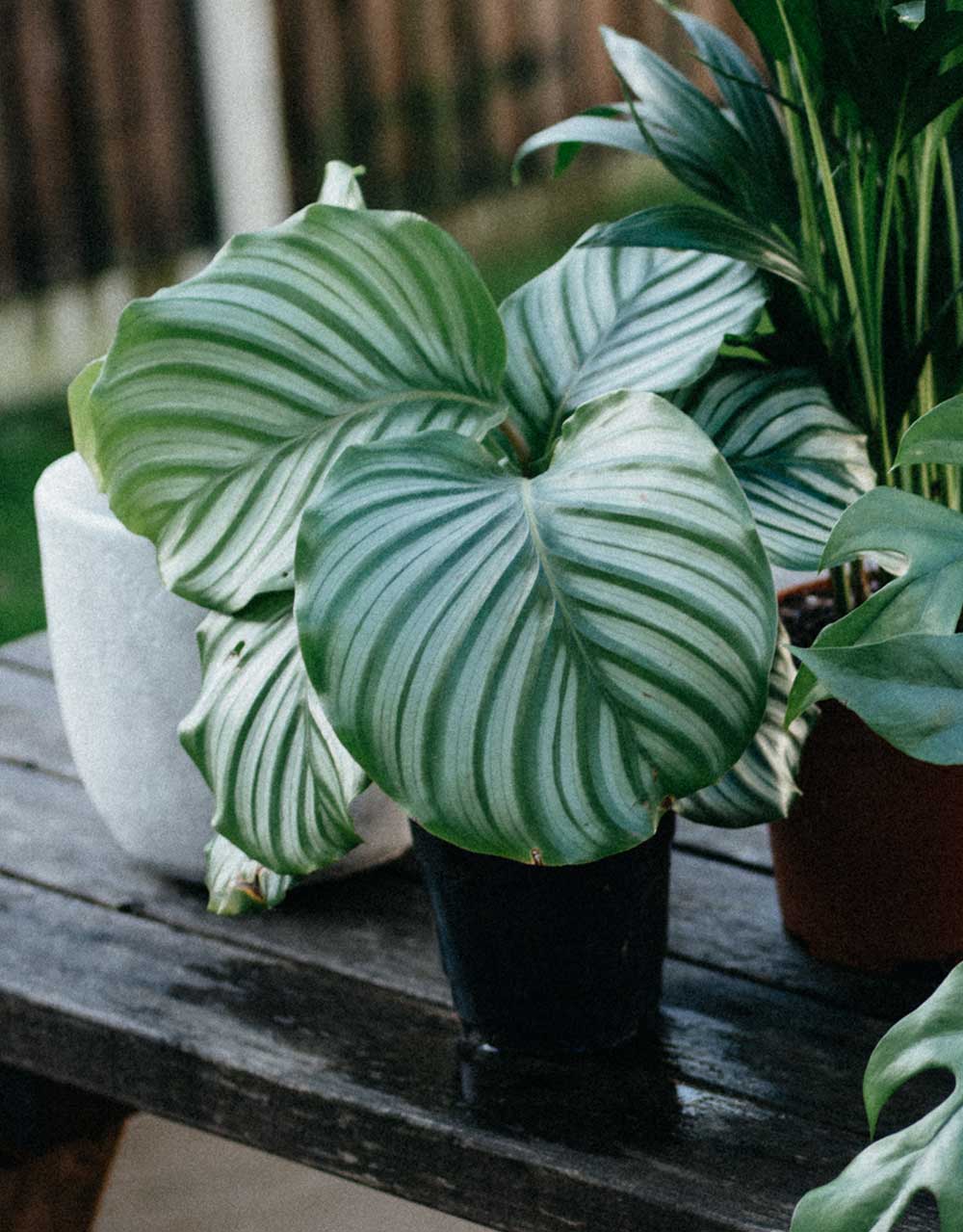
Pruning
Regularly removing dead or yellowing leaves encourages new growth and maintains the plant's overall health. Use sterilized scissors or pruning shears to make clean cuts at the base of the stem. This not only improves the plant's appearance but also prevents the spread of disease and pests.
When pruning Calathea Orbifolia, avoid cutting off too many leaves at once, as this can shock the plant and slow its growth. Instead, remove only the dead or yellowing leaves as needed, typically one or two at a time. This will allow the plant to adjust to the changes and continue to grow and thrive.
In addition to removing dead or yellowing leaves, keep an eye out for any signs of pest infestations or disease. Common pests that can affect Calathea Orbifolia include spider mites, thrips, mealybugs, scale insects, and aphids. Signs of pest infestations include tiny webs, white or gray powdery residue, and small bumps on the leaves or stems. If you notice any of these signs, it is important to take action promptly to prevent further damage and spread of the pests.
Fiskars Bypass Pruner Garden Tool with Steel Blade and SoftGrip Handle
Fully hardened, precision-ground steel blade
Repotting Calathea Orbifolia
It is recommended to repot your Calathea Orbifolia every 1-2 years, or when the roots start to outgrow the pot. Repotting can also help to refresh the soil, which can become depleted of nutrients over time. Choose a pot that is 1-2 inches larger in diameter than the current one. This will give the plant enough space to continue growing without overwhelming it with too much soil. Choose a pot with drainage holes to prevent waterlogging and root rot.
To repot Calathea Orbifolia, start by gently removing the plant from the old pot, taking care not to damage the roots. If the roots are tightly wound, you may need to gently loosen them with your fingers or a sterilized tool. Once the plant is removed from the old pot, inspect the roots for any signs of damage or disease.
Next, place the plant in the new pot and fill in with fresh soil, maintaining the same depth as before. Once the soil is filled in, gently press it down to ensure the plant is stable.
Finally, water the plant thoroughly after repotting to help settle the soil and ensure that the plant has adequate moisture. Place it in a warm, well-lit location, away from direct sunlight or drafts. Monitor the plant's watering needs in the following weeks to ensure that it is adjusting well to its new pot and soil.
Propagating Calathea Orbifolia
Calathea Orbifolia can be propagated through division, which involves carefully separating the plant into smaller sections. Start by removing the entire plant from its pot and gently shaking off any excess soil. Carefully separate the plant into smaller sections, ensuring that each section has a healthy root system and at least one healthy leaf. Use a sharp, sterilized knife or shears to make clean cuts and avoid damaging the roots. Replant the divisions in fresh soil and water thoroughly. Keep the newly divided plants in a warm, humid environment to help them establish their root systems.
Common Calathea Orbifolia Problems
Root Rot
Overwatering or poorly draining soil can be detrimental to the health of Calathea Orbifolia and can lead to root rot. Root rot is a condition caused by a fungal infection that occurs when the roots are consistently exposed to excess moisture. If you notice a foul smell or mushy, black roots, this is a sign that your plant may have root rot.
To address root rot in Calathea Orbifolia, start by removing the affected areas of the plant, including any mushy or black roots. Use sterilized scissors or pruning shears to make clean cuts and avoid further damage to the plant. After removing the affected areas, repot the plant in fresh soil that is well-draining and rich in organic matter. Choose a pot with drainage holes to prevent future occurrences of root rot.
To prevent root rot from occurring in the future, adjust your watering schedule and ensure that the soil is well-draining. Calathea Orbifolia prefers moist soil, but it is important to avoid overwatering and allowing the soil to become waterlogged. The best way to determine when to water your plant is to check the soil moisture level by sticking your finger into the soil or using a moisture meter. Use a well-draining soil mix that allows excess water to escape through the drainage holes.
Pests
Calathea Orbifolia is susceptible to pests like spider mites, thrips, mealybugs, and aphids, which can cause significant damage to the plant if left untreated.
Spider mites are tiny arachnids that can cause fine webbing on the leaves of Calathea Orbifolia, as well as yellowing and browning of the leaves. Thrips are small, slender insects that can cause silvery or brownish streaks on the leaves, as well as distorted growth. Mealybugs are soft-bodied insects that can cause white, cottony masses on the leaves and stems, as well as stunted growth. Aphids are small, pear-shaped insects that can cause curling or distortion of the leaves, as well as sticky sap on the plant.
These pests can be difficult to detect, so you should check the plant regularly for signs of infestation. Look for fine webbing, white or cottony masses, silvery or brownish streaks, or curling or distortion of the leaves. If you notice any of these signs, take action promptly to prevent further damage and spread of the pests.
To treat pest infestations in Calathea Orbifolia, you can use natural remedies like insecticidal soap or neem oil. These remedies are effective at killing pests while being safe for the plant and the environment.
Here are some steps you can take to treat pests on your Calathea Orbifolia:
- Isolate the plant: If you notice pests on your Calathea Orbifolia, isolate the plant from other plants to prevent the pests from spreading.
- Identify the pest: Identify the pest that is affecting your plant so that you can choose the most effective treatment. Different pests may require different treatments, so it's important to know what you're dealing with.
- Use natural remedies: Insecticidal soap and neem oil are effective natural remedies for treating pest infestations on Calathea Orbifolia. Follow the instructions on the label carefully and apply the treatment evenly to all parts of the plant, including the undersides of the leaves where pests often hide.
- Clean the plant: Use a damp cloth or sponge to gently wipe down the leaves of your Calathea Orbifolia and remove any pests or debris. This can help to reduce the number of pests on the plant.
- Prune affected leaves: If the infestation is severe, it may be necessary to prune affected leaves to prevent the pests from spreading further.
- Monitor the plant: Monitor your Calathea Orbifolia regularly after treatment to ensure that the pests have been eradicated and that the plant is healthy.
There are many insecticidal soap and neem oil brands available on the market that are safe for indoor use and specifically formulated for houseplants. Here are some recommended products:
- Bonide Insecticidal Soap: This insecticidal soap is safe for use on Calathea Orbifolia and other indoor plants. It is made with natural and organic ingredients, and it kills a wide range of pests including spider mites, aphids, and whiteflies.
- Garden Safe Insecticidal Soap: This insecticidal soap is safe for use on indoor plants. It's made with natural ingredients and it kills a variety of pests including aphids, spider mites, and whiteflies.
- Natria Neem Oil: This neem oil product kills a wide range of pests including spider mites, thrips, and whiteflies.
Remember to always follow the instructions on the label when using any pest treatment, and to test any new product on a small area of the plant before applying it more widely.
In addition to using natural remedies, we recommend removing any dead leaves or debris from around the plant. Dead leaves and debris can harbor pests and create a breeding ground for fungal infections, so it's best to remove them.
To prevent future occurrences of pest infestations, maintain proper care and hygiene for your Calathea Orbifolia. This includes providing adequate water and humidity, avoiding over-fertilizing, and ensuring proper air circulation around the plant.
Brown / Crispy Tips
Brown tips or edges on the leaves may indicate low humidity. Calathea Orbifolia prefers high humidity levels, and dry air can cause the tips and edges of the leaves to become brown and crispy. To address this issue, increase the humidity level around the plant. You can do this by using a humidifier or placing the plant on a tray filled with water and pebbles. Keep the plant away from drafts or direct sunlight, as this can further dry out the leaves.
Yellow Leaves
Yellow leaves can indicate overwatering. Overwatering can lead to root rot, which can cause leaves to turn yellow and eventually brown and mushy. If you notice yellowing leaves on your Calathea Orbifolia, it's important to adjust your care routine accordingly. First, ensure that the plant is not sitting in water, and make sure the soil is well-draining. Reduce the frequency and amount of watering, and only water the plant when the top inch of soil feels dry to the touch.
If adjusting your care routine does not solve the issue, it may be necessary to repot the plant in fresh soil or move it to a more suitable environment.
Curled Leaves
One common cause of curled leaves in Calathea Orbifolia is too little water. This plant requires consistently moist soil, and if the soil dries out too much between waterings, the plant may become stressed and exhibit curling leaves. In some cases, the leaves may even start to turn brown and crispy at the edges, especially if the dry soil persists for an extended period of time. Water your Calathea Orbifolia regularly and don't let the soil to dry out completely.
Over-exposure to the sun can also cause curled leaves on Calathea Orbifolia. This plant prefers bright, indirect light but cannot tolerate direct sunlight. If the plant is placed in a spot where it receives too much direct sunlight, the leaves may start to curl and the edges may turn brown.
Clogged Pores
A build-up of dust particles on the leaves of your Calathea can have a negative impact on the plant's health and growth. As dust accumulates on the leaves, it can clog the pores, which can lower the plant's ability to capture light and perform photosynthesis. To prevent dust build-up on your Calathea, wipe the leaves once a month with a damp cloth on both sides.
In addition to improving the plant's ability to capture light, wiping down the leaves can also help to prevent pest infestations.
Transplant Shock
Repotting a plant can be stressful for it, and Calathea Orbifolia is no exception. If you notice signs of stress after repotting, such as wilting or dropping leaves, give your plant time to adjust to its new environment. Repotting can disrupt the plant's root system, and it may take some time for the roots to re-establish themselves and for the plant to recover.
To help your Calathea Orbifolia recover from repotting, maintain consistent care, and avoid moving the plant. This means providing it with the same amount of water and light as before and avoiding any sudden changes in temperature or humidity. Avoid fertilizing the plant for at least a month after repotting, as this can further stress the plant.
It's normal for the plant to show some signs of stress after repotting. However, if the plant continues to show signs of stress after a few weeks, it may be necessary to investigate further. This could include checking the soil moisture level, ensuring the plant is not receiving too much or too little light, or checking for pest infestations.
Fertilizer Burn
Over-fertilizing Calathea Orbifolia can cause fertilizer burn, which can lead to brown spots on the leaves.
Fertilizer burn occurs when the concentration of nutrients in the soil becomes too high, leading to an imbalance that can damage the plant. This can be caused by applying too much fertilizer at once, applying fertilizer too frequently, or using a fertilizer that is too strong for the plant's needs. When this happens, the excess salt in the fertilizer can accumulate in the soil, causing the plant to absorb more salt than it can handle. This can lead to dehydration, yellowing, and browning of the leaves, as well as stunted growth and in severe cases, death.
To avoid fertilizer burn, apply a balanced fertilizer every 4-6 weeks during the growing season and stop fertilization during the winter months when the plant is dormant. Use a fertilizer that is specifically formulated for indoor plants and dilute it to half-strength or more. Additionally, water the plant thoroughly before and after fertilization to help flush any excess salt from the soil.
If you notice brown spots on the leaves of your Calathea Orbifolia, you should act quickly to prevent further damage. This may involve adjusting your fertilization routine, reducing the amount of fertilizer you use, or switching to a gentler fertilizer.
Mold developing on the soil
Like all indoor plants, Calathea Orbifolia is susceptible to mold growth on the soil surface. Two of the most common causes of mold growth on the soil surface of Calathea Orbifolia are too little light and over-watering.
As a tropical plant, Calathea Orbifolia requires bright, indirect light to grow properly. When the plant does not receive enough light, it can result in a buildup of moisture on the soil surface, creating an environment that is conducive to mold growth. To prevent mold growth due to insufficient light, place the plant in a spot with bright, indirect light. Supplementing with artificial light can also be helpful.
Secondly, over-watering is another common cause of mold growth on the soil surface of Calathea Orbifolia. When the soil is watered too frequently or is not allowed to dry out between waterings, it can become waterlogged, resulting in a buildup of moisture on the soil surface. This excess moisture, along with the organic matter in the soil, can create an ideal environment for mold growth. To prevent mold growth due to over-watering, water the plant only when the top inch of the soil feels dry to the touch.
Mold growth on the soil surface of Calathea Orbifolia does not necessarily mean that the plant is unhealthy. However, the presence of mold along with yellowing lower leaves could indicate root rot.
Styling Calathea Orbifolia
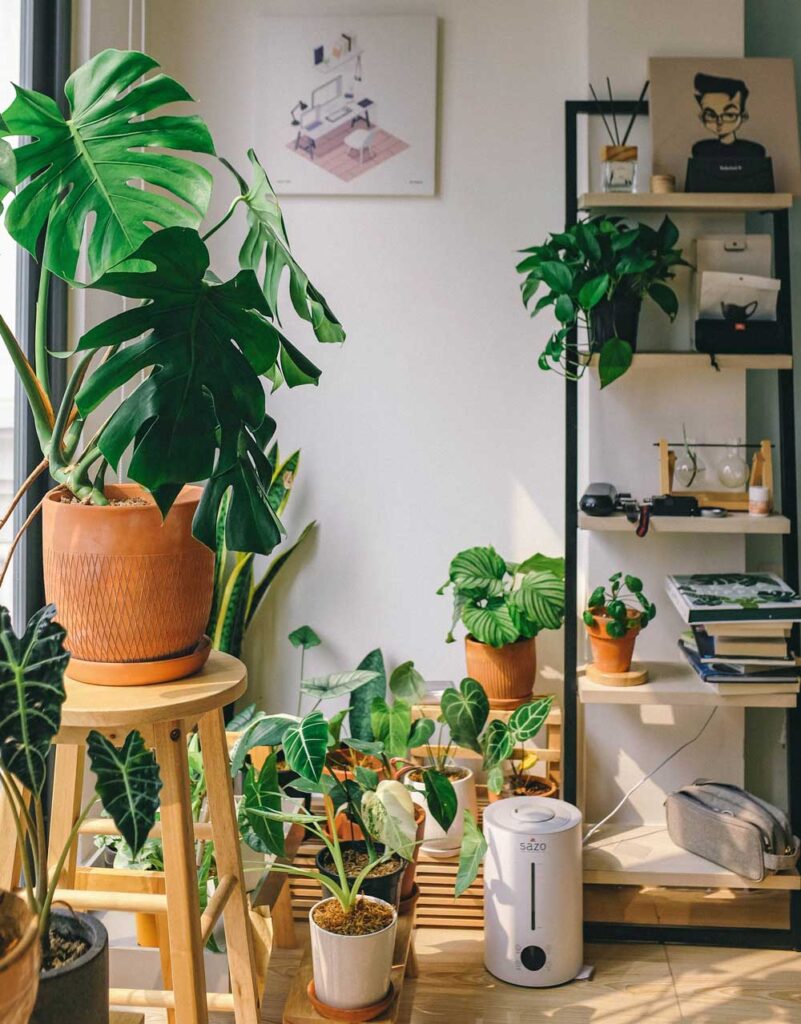
Styling your Calathea Orbifolia is an excellent way to showcase its unique beauty and add a touch of greenery to your home or office space. This stunning plant can be styled in a variety of ways, depending on your decor and personal style.
One popular way to style Calathea Orbifolia is to place it on a plant stand or pedestal, which can elevate the plant and make it a focal point in the room. Alternatively, you can group several Calatheas together to create a lush and tropical display.
Another option is to pair Calathea Orbifolia with other plants with contrasting textures and colors. For example, combining it with a trailing plant such as a Pothos or a hanging plant such as a String of Pearls can create a beautiful and dynamic display.
When it comes to containers, cover pots can be used to add an extra layer of style and functionality to your Calathea Orbifolia. Cover pots can be made from a variety of materials, including ceramic, terra cotta, or metal, and come in a range of sizes and styles to match your decor.
Overall, Calathea Orbifolia is a lovely and unique houseplant that can add a touch of tropical elegance to any home. With proper care and attention, this plant can thrive and continue to delight its owners with its stunning appearance and natural movements.
Read next: How to Grow and Care for Calathea Ornata
